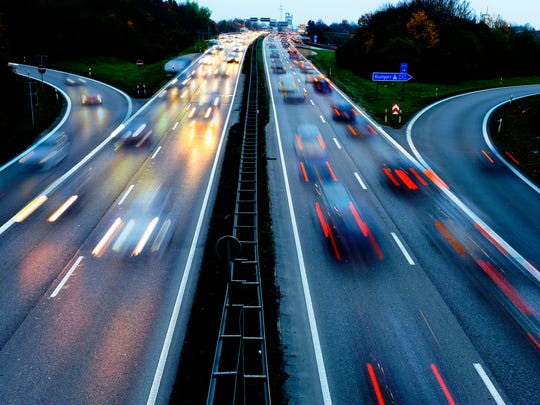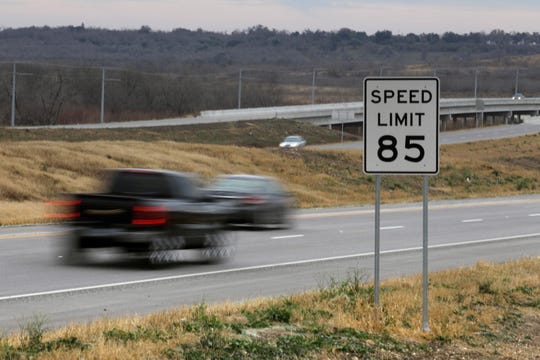
#speedlimit #JohnMoorlach #Autobahn #Interstate5 #California #Route99
State Senator John Moorlach proposed a bill that would add four lanes to two highways, Interstate 5 and California State Route 99, with no speed limit.
After years of seeing posted highway speeds creep up around the country, perhaps it's no surprise that a California legislator would propose the ultimate in motoring freedom: no limits at all.
State Sen. John Moorlach's vision for a Golden State version of Germany's famed Autobahn — a stretch of pavement where you can drive as fast you want — is just the latest in a series of moves by states to put the pedal to the metal when it comes to speed limits.
It's happening even as safety experts try to throw on the brakes on speeds that have now reached legal levels they view as somewhere between risky and downright dangerous.

"We have routinely seen studies that show when states raise speed limits, they can expect higher deaths," said Maureen Vogel, spokeswoman for the National Safety Council.
Seven states — Idaho, Montana, Nevada, South Dakota, Texas, Utah and Wyoming — have allowed 80 mph speed limits on select highways. One, Texas, has 85 mph on a section of State Highway 130. Legislatures have upped limits as cars have become safer and more powerful and the price of gas has tumbled, lowering concerns about the poor fuel mileage that high-speed driving can bring.
Yet the resulting higher speeds haven't made much of a statistical dent in highway deaths, the Governors Highway Safety Association reports.
In 2017, there were 9,717 speed-related deaths from among 37,133 total road fatalities. Those speed-related deaths were down 574 from 2016, were about the same as in 2015 and up 434 from 2014.
In California, Moorlach doesn't think safety will be a showstopper when it comes to his no-speed-limit plan. He said crash concerns haven't dampened enthusiasm for the German Autobahn, a haven for speedsters for decades. In announcing his plan, he pointed to a World Health Organization report that estimates road traffic deaths at 4.1 per 100,000 people in Germany compared with 12.4 in the U.S.
His bill would add four lanes to two highways, Interstate 5 and California State Route 99, for drivers who want the convenience of going without a speed limit.
The lanes would be in place of finishing the first leg of California's high-speed rail line, derided as the "train to nowhere" by critics because the first leg wouldn't connect to either Los Angeles or San Francisco, the whole point of the line as originally envisioned.
Making matters worse, the Trump administration announced last week that it would cancel $929 million in funding needed to complete the first segment of rail.
After California Gov. Gavin Newsom said this month that building the entire bullet train line would be too expensive and take too long, Moorlach said a brainstorming session resulted in the American Autobahn idea. Adding lanes would be expensive, but it is "still a whole lot cheaper than $77 billion," the latest estimated cost of the rail project.
It may be cheaper, but it won't be safer, experts complain.
Higher speeds not only can increase the frequency of crashes, but the severity as well since vehicles smash into each other at higher combined speeds.
"You can change speed limits, but you can't change physics," Vogel said.
A study by the Insurance Institute for Highway Safety found that the lives of 33,000 motorists and their passengers would have been saved if there had been no speed limit increases between 1993, when states posted highways at either 55 mph or 65 mph and 2013.
Another IIHS study that looked only at the effect of raising the speed limit to 80 mph in Utah estimated that an increase in traffic speed of only 3 mph, to 78 mph, increased the chance of fatalities by 17 percent.
The other problem is that even with higher limits, people tend to drive faster than they should.
Having gone on trips to Utah and Nevada, where other motorists sometimes whiz by at 90 mph, Chuck Farmer, vice president of research for IIHS, said, "Personally, I find it very uncomfortable."
"When higher speed signs go up, not only is traffic moving faster but some motorists immediately start exceeding the new posted limit," said Jonathan Adkins, executive director of the Governors Highway Safety Association. The effect is a "double whammy" on the average speed of traffic.
He calls speeding "the forgotten issue" in traffic safety. It's ignored because so many drivers push the limits.
By Chris Woodyard, USA Today, Feb. 22, 2019

Comments
Post a Comment